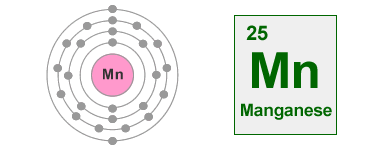
Gahn’s manganese was also impure, but the new metallic element now gained widespread recognition. The metal he produced was white, hard and brittle when broken it had a granular structure. Gahn used a blowpipe to increase the temperature of the reaction. Gahn used a similar method to the one Kaim had used a few years earlier, with charcoal as the reducing agent. His attempts to isolate it failed and he asked his friend Johan Gottlieb Gahn to try.

In Sweden, Carl Wilhelm Scheele – the discoverer of chlorine and one of oxygen‘s independent discoverers – was aware that pyrolusite contained a new element. He invited other chemists to find a flux that could produce the pure metal. Kaim claimed that no iron was present in his product, but he was aware his manganese was not pure. When broken and viewed side-on, he observed blue flecks. Kaim described the product of the reaction as a blue-whitish shiny brittle metal with many differently shaped facets. (A flux is a reducing agent.) If so, the reaction would have been: The composition of Kaim’s flux is uncertain, although it was probably based on charcoal. Working in Vienna, Kaim mixed powdered pyrolusite with twice its weight of black flux and heated the mixture strongly. (2),(2.1),(3)ĭetails of the first isolation of metallic manganese were published in 1770 by Ignatius Gottfried Kaim in a dissertation under the supervision of the chemist Jakab Jozsef Winterl.

The color changes he observed in the product were green/blue/red/green, establishing that pyrolusite did not contain iron. Pott prepared potassium manganate by fusing caustic potash (potassium hydroxide) with pyrolusite in air. Until then pyrolusite was believed to have been a compound of iron. The first recognition of manganese’s existence as a distinct element was in 1740, when the German chemist Johann Heinrich Pott stated that pyrolusite (manganese dioxide) contained a new earth metal. (1) It is still used for the same purpose today.
/GettyImages-173234109-5b982cb9c9e77c0050e79e27.jpg)
In the first century AD, Pliny the Elder, the Roman author, described how black powder (manganese dioxide) was used to manufacture colorless glass. Manganese compounds have been used since ancient times.


 0 kommentar(er)
0 kommentar(er)
